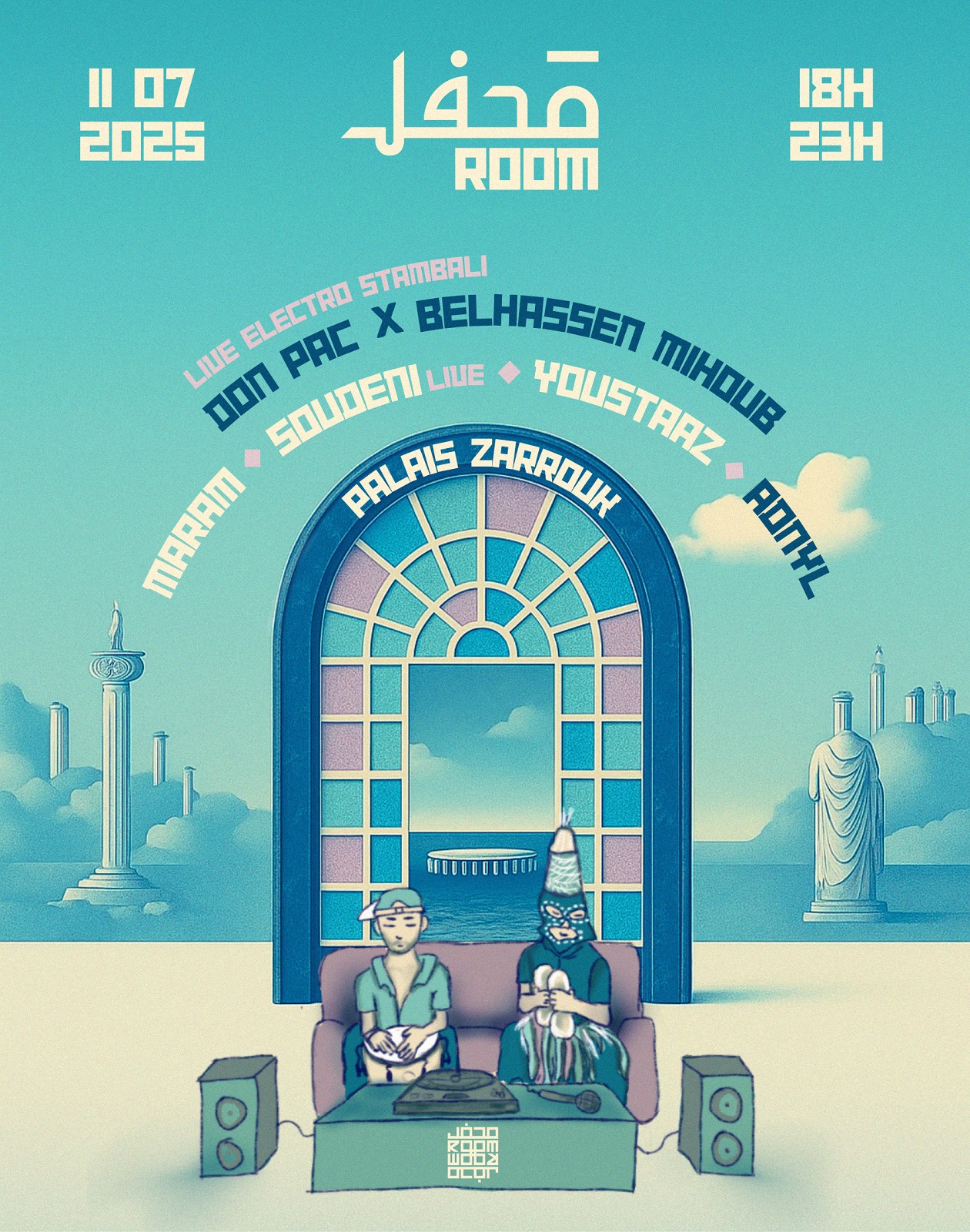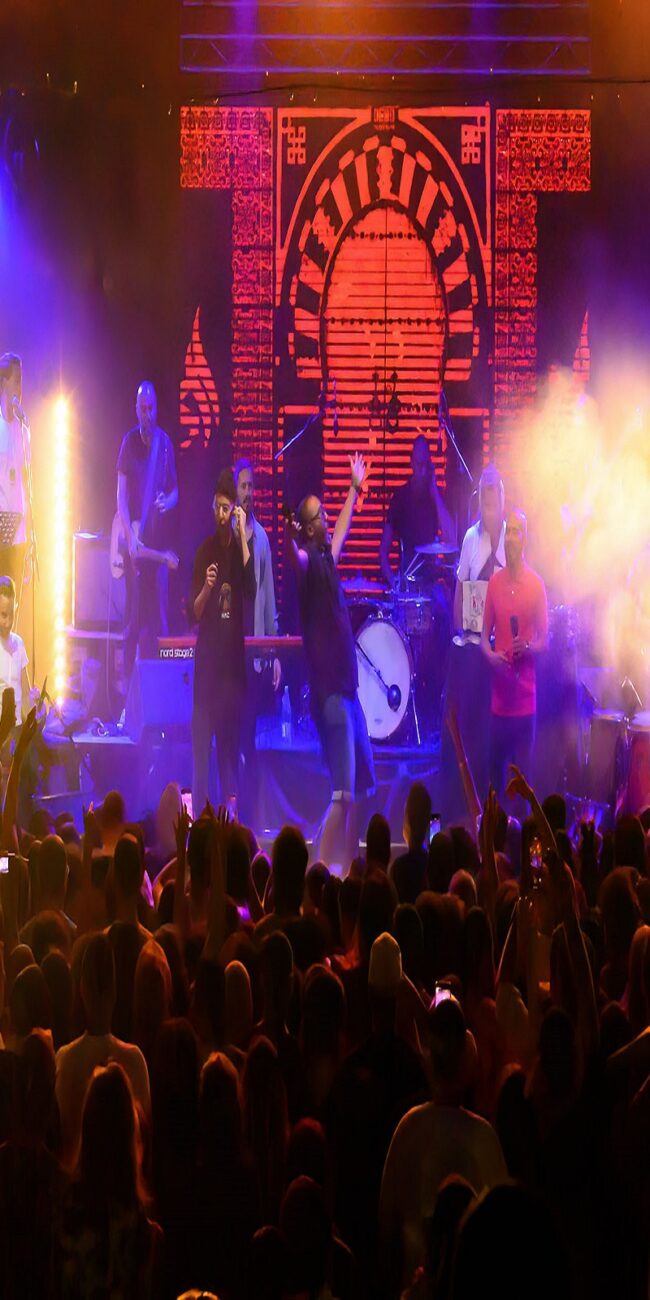
Mahfel room 2
In a world increasingly saturated with spectacle, where music festivals blur together and cultural events rush to impress, there is something almost subversive about a project that begins not with noise, but with listening. In Tunisia, a country where the echoes of ancient civilizations still cling to stone and sky, a group of artists and curators have done something that feels both contemporary and eternal. They have created Mahfel Room, a space where heritage is not simply remembered, but reimagined, through sound, silence, and light.
At first glance, Mahfel Room appears to be a music project. It brings together DJs, visual artists, and traditional musicians in historical spaces across Tunisia. But beneath its surface lies something more layered: a cultural philosophy, one that sees the country’s architectural and sonic legacy not as frozen artifacts, but as living matter. In this sense, Mahfel Room is not a place, but a gesture. It proposes that the future of heritage lies not in preservation alone, but in renewal. That the past does not only speak in museums or textbooks, but in rhythm, resonance, and remix.
The inaugural edition, curated by the creative collective Mushmoom, was held at Palais Zarrouk, a majestic 19th-century palace perched in Carthage, overlooking the sea. The site was chosen not just for its beauty, but for its resonance. Here, under carved ceilings and within crumbling walls, Mahfel Room invited over 300 people to witness what happens when ancestral soundscapes meet electronic beats. The result was neither nostalgia nor futurism, but a strange, poetic bridge between worlds. Light installations flickered in rhythm with live sets. Stambali chants folded into digital loops. And a quiet sense of reverence filled the space, as if time itself had been stretched.
To call it a concert would be reductive. Mahfel Room functions as an ecosystem. Local artisans are invited to display their craft. Young musicians, many of whom work between traditional and contemporary genres, are offered a stage that treats their experimentation as essential, not peripheral. In the crowd are both elders and students, tourists and neighbors, all gathered not around celebrity, but curiosity. The focus is not on who performs, but on what the space becomes when performance meets history.
What makes Mahfel Room remarkable is its refusal to be either fully avant-garde or fully folkloric. It does not seek to sanitize Tunisia’s heritage for export, nor does it trap it in clichés. Instead, it treats it with seriousness and play. It dares to ask whether monuments can host beats. Whether ruins can dance. Whether the sound of a forgotten ritual can find a second life in a speaker.
The list of collaborators reflects this philosophy. Artists such as Maram Gharbi, Youstaaz, ADNYL, and Don Pac do not simply perform; they dialogue with the space. Some collaborate directly with traditional musicians. Others compose with the acoustics of the site in mind. Each performance is site-specific, fleeting, and unrepeatable. In this way, Mahfel Room approaches music as architecture and architecture as memory.
It is easy to forget that Tunisia, so often reduced to political headlines or tourist imagery, contains within it one of the richest cultural legacies on the Mediterranean. From Andalusian rhythms to Berber chants, from Ottoman architecture to Carthaginian ruins, it is a country whose soul is layered, plural, and still largely unmined by contemporary art. Mahfel Room does not seek to explain Tunisia to the world. It invites Tunisia to listen to itself.
Beyond the events themselves, the collective behind the project is building something longer-term. They envision an entire network of future editions, from Sfax to Djerba, each one rooted in a specific historical site, each one curated with local artists and artisans. They are also developing a record label, digital archives, and audiovisual platforms to extend the project beyond its physical confines. Their ambition is not only to curate, but to infrastructure, to create a sustainable cultural model in which heritage becomes both creative material and economic engine.
Perhaps the most moving aspect of Mahfel Room is its faith in slowness. In a region and a generation that have seen rupture after rupture, it offers not escape, but attention. It creates space. Space for voices, for sounds, for questions. It does not shout; it listens. And in doing so, it reminds us that culture is not what is behind us, but what we carry forward.
In the end, Mahfel Room is not just a project about Tunisia. It is a proposal for the world. A proposal to treat heritage not as a brand, but as a breath. To remember that the future, like rhythm, depends on how we pause.








